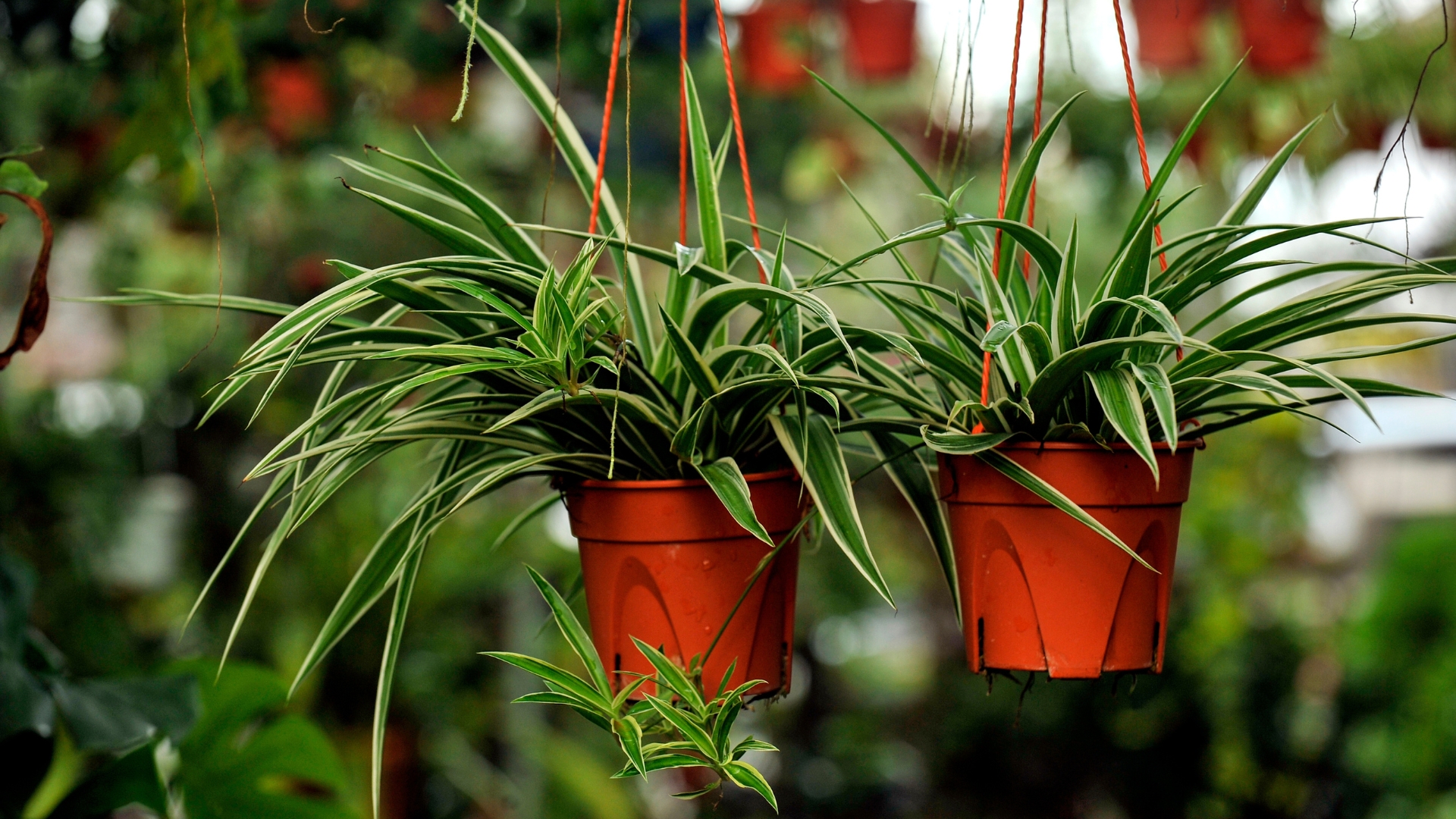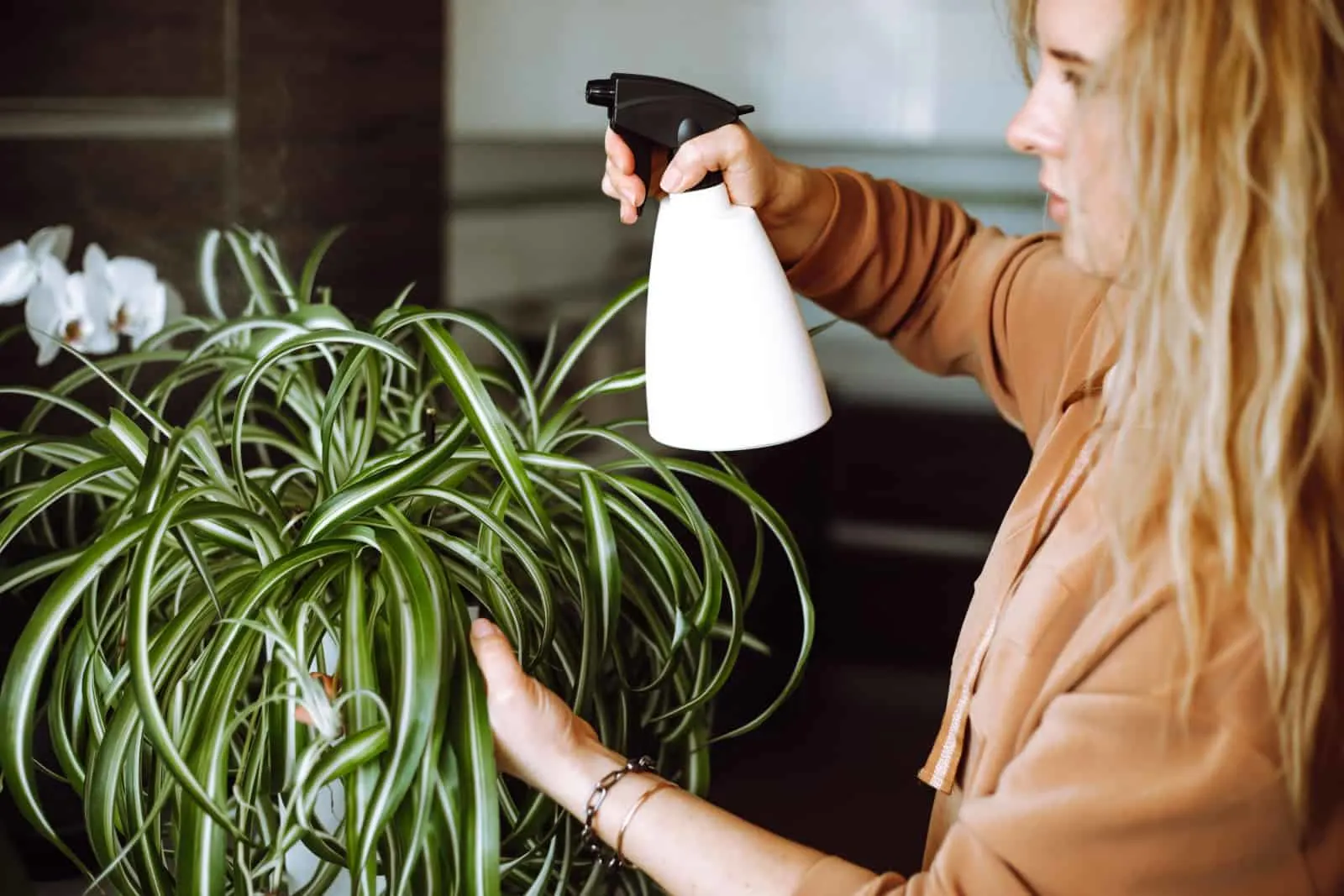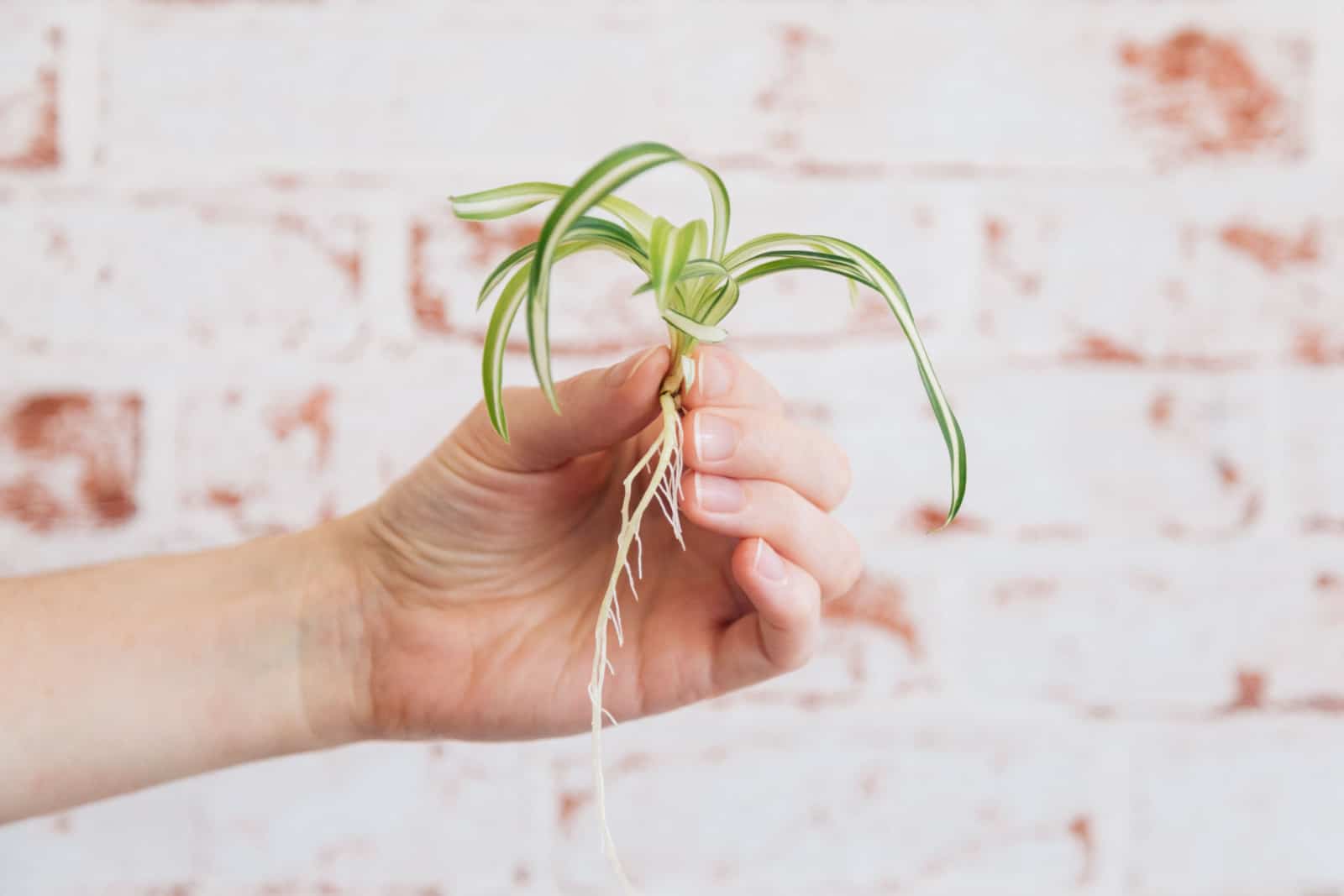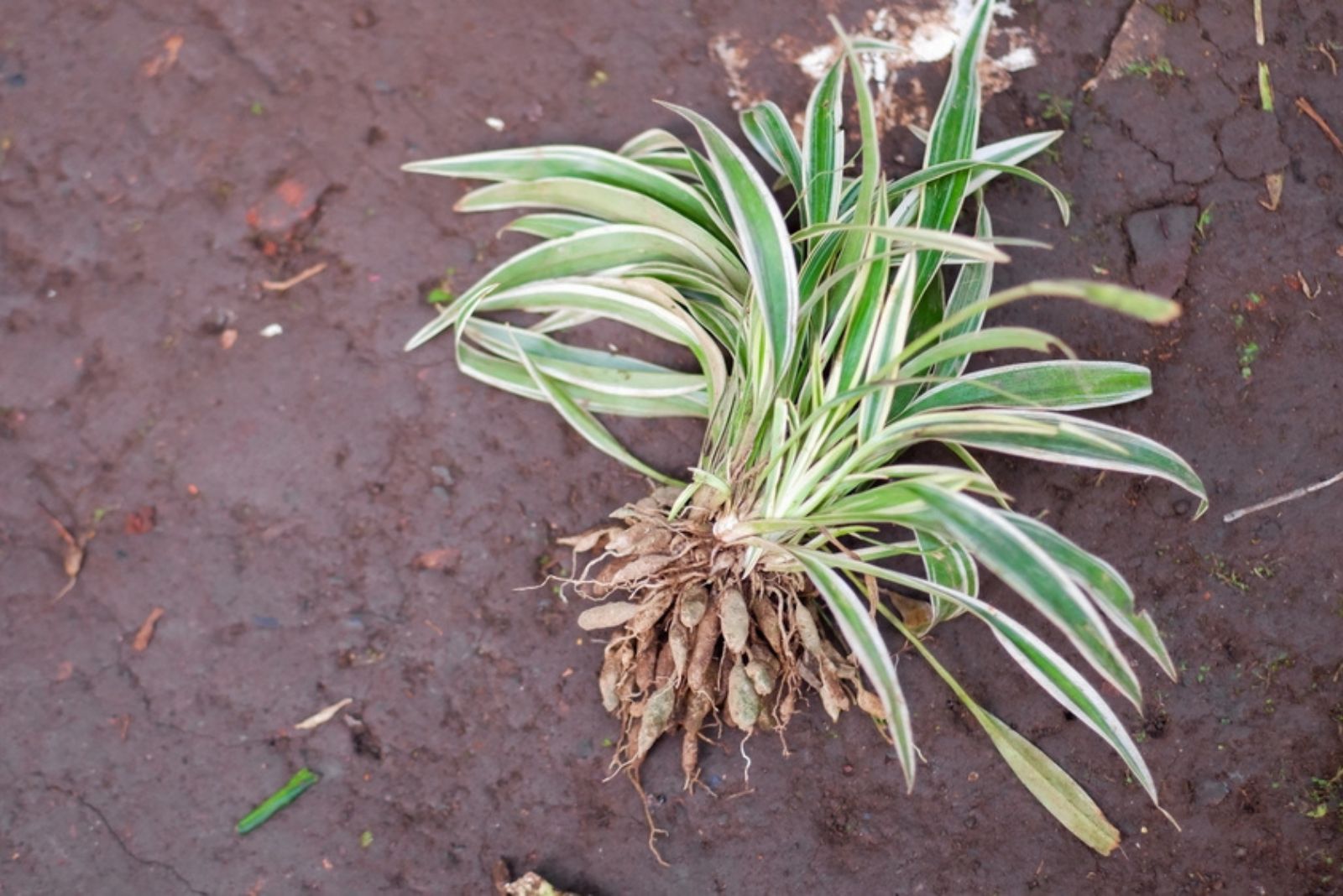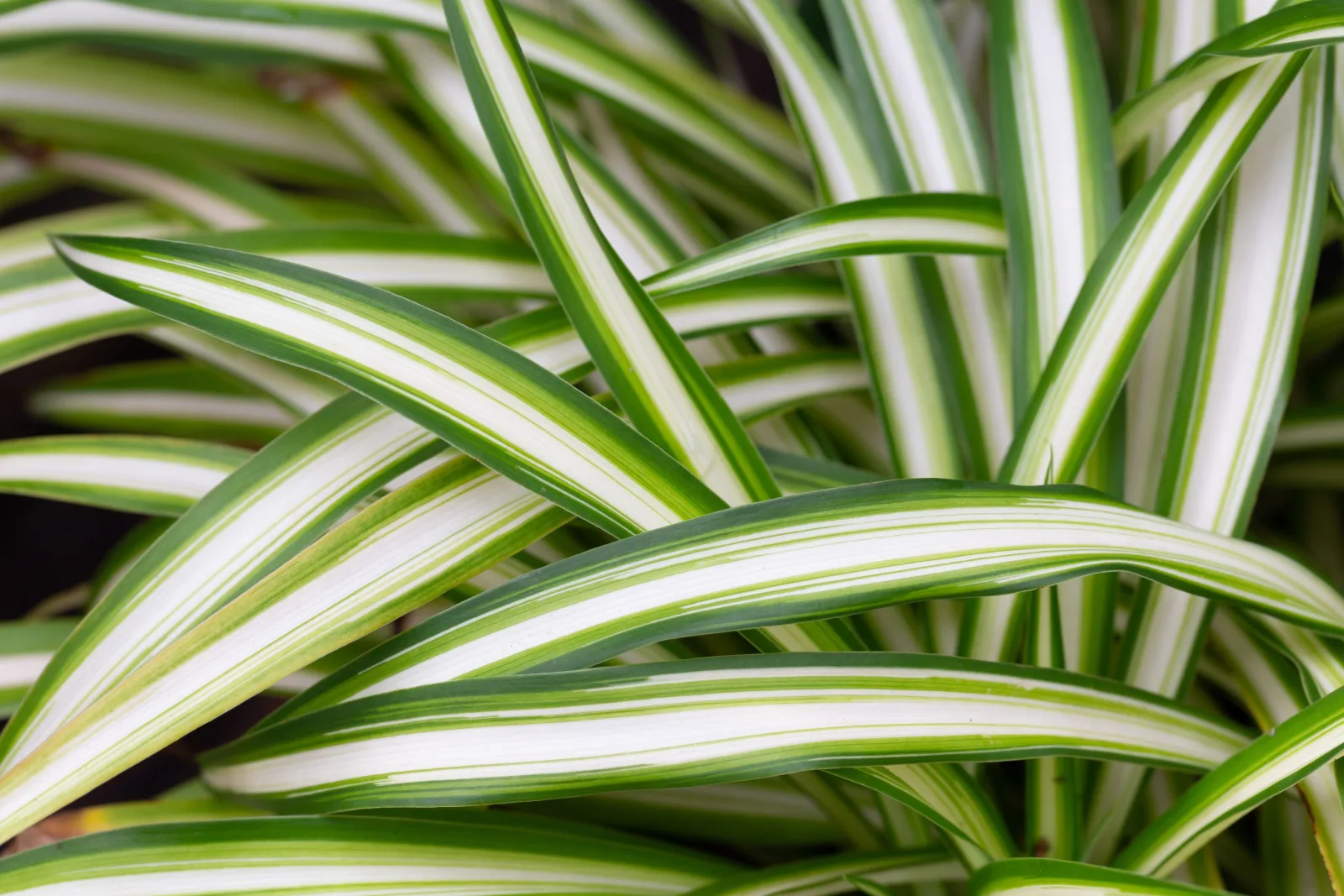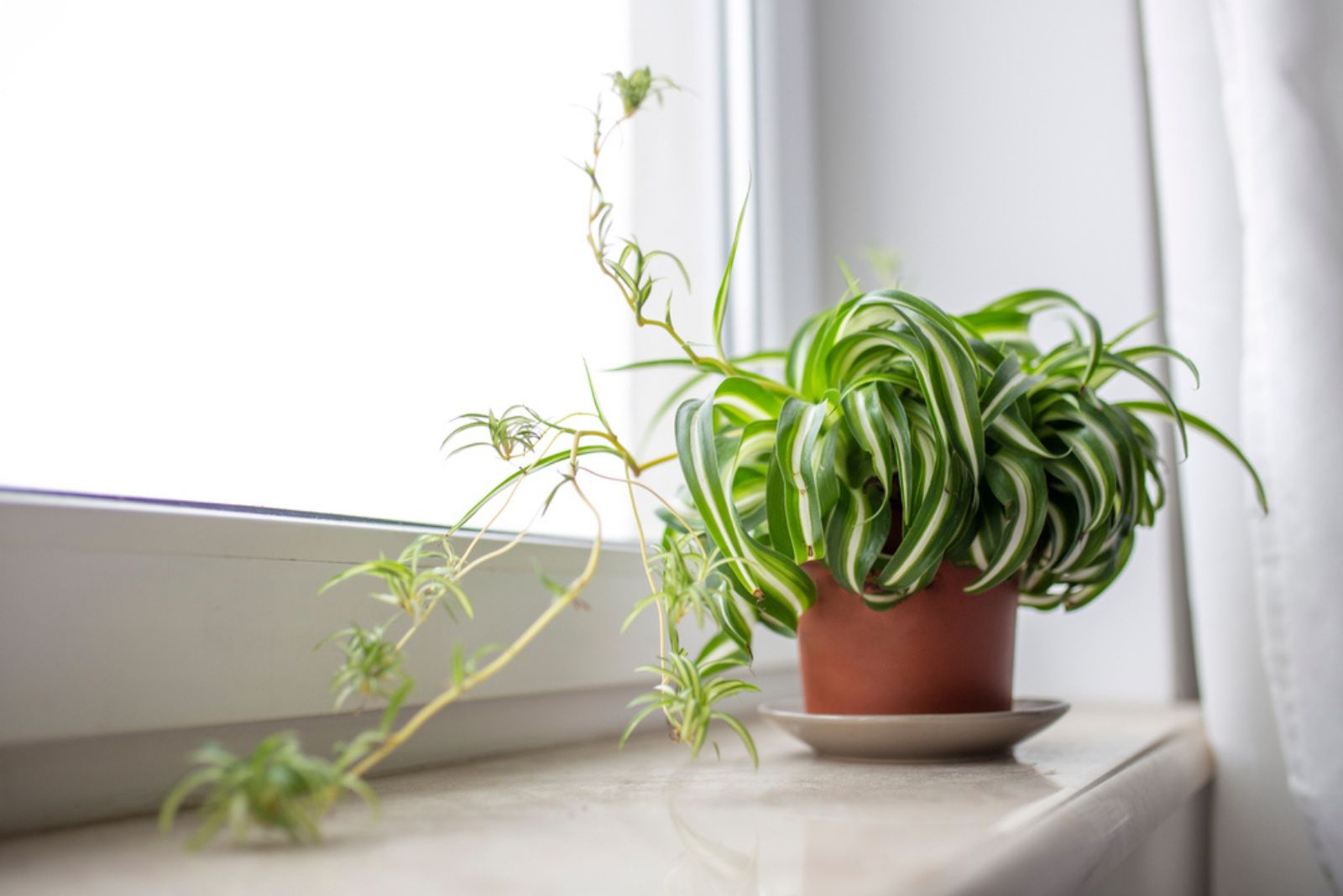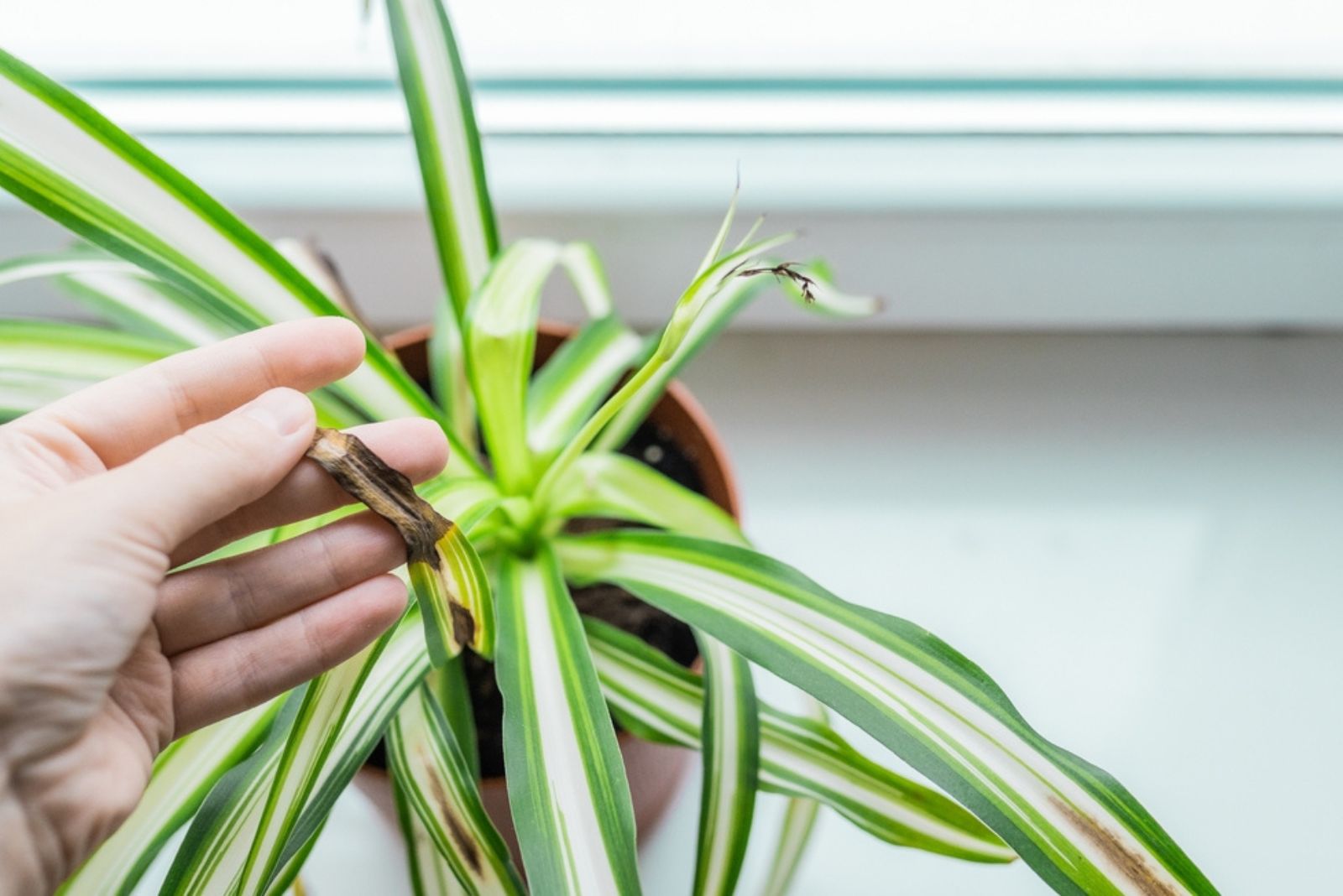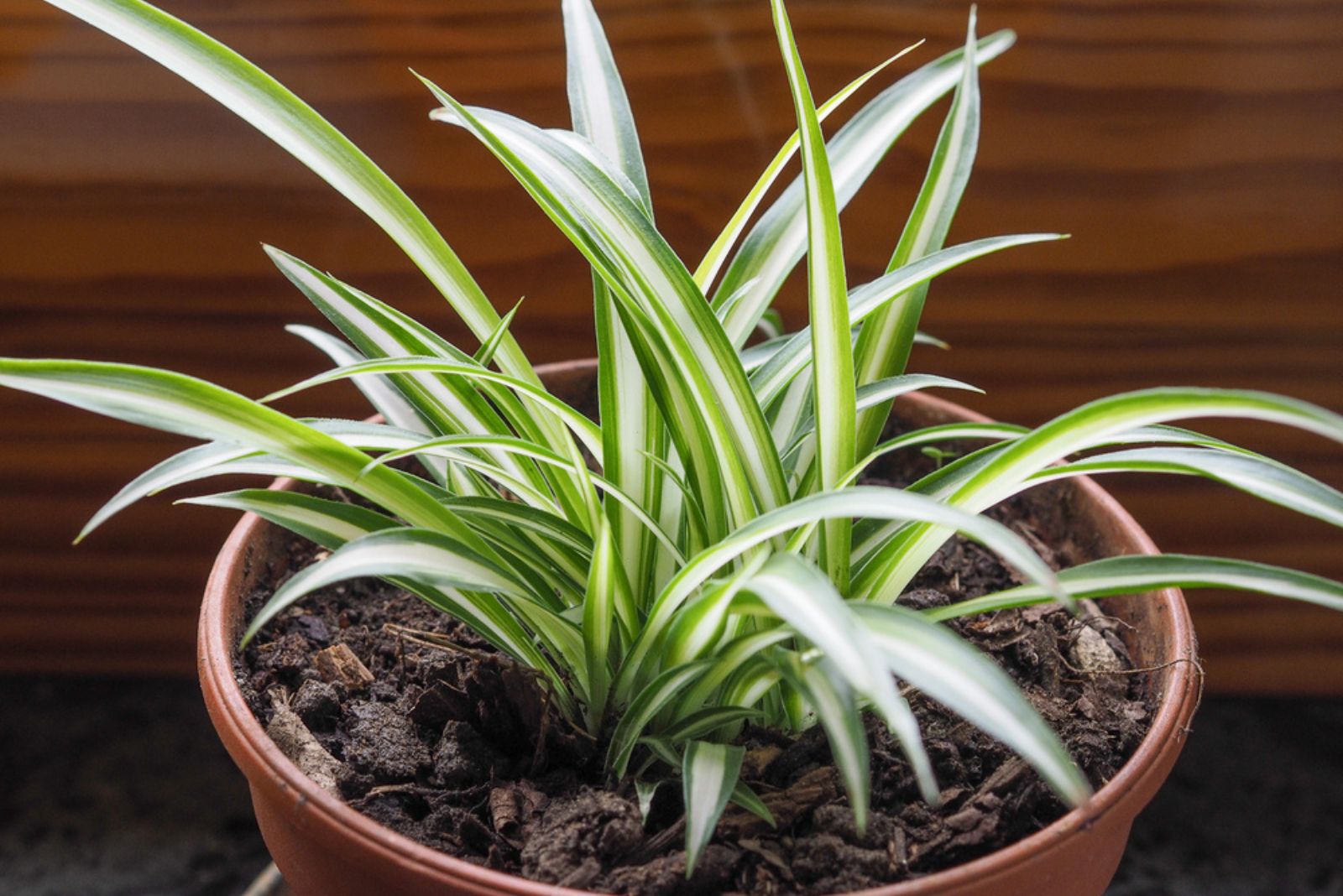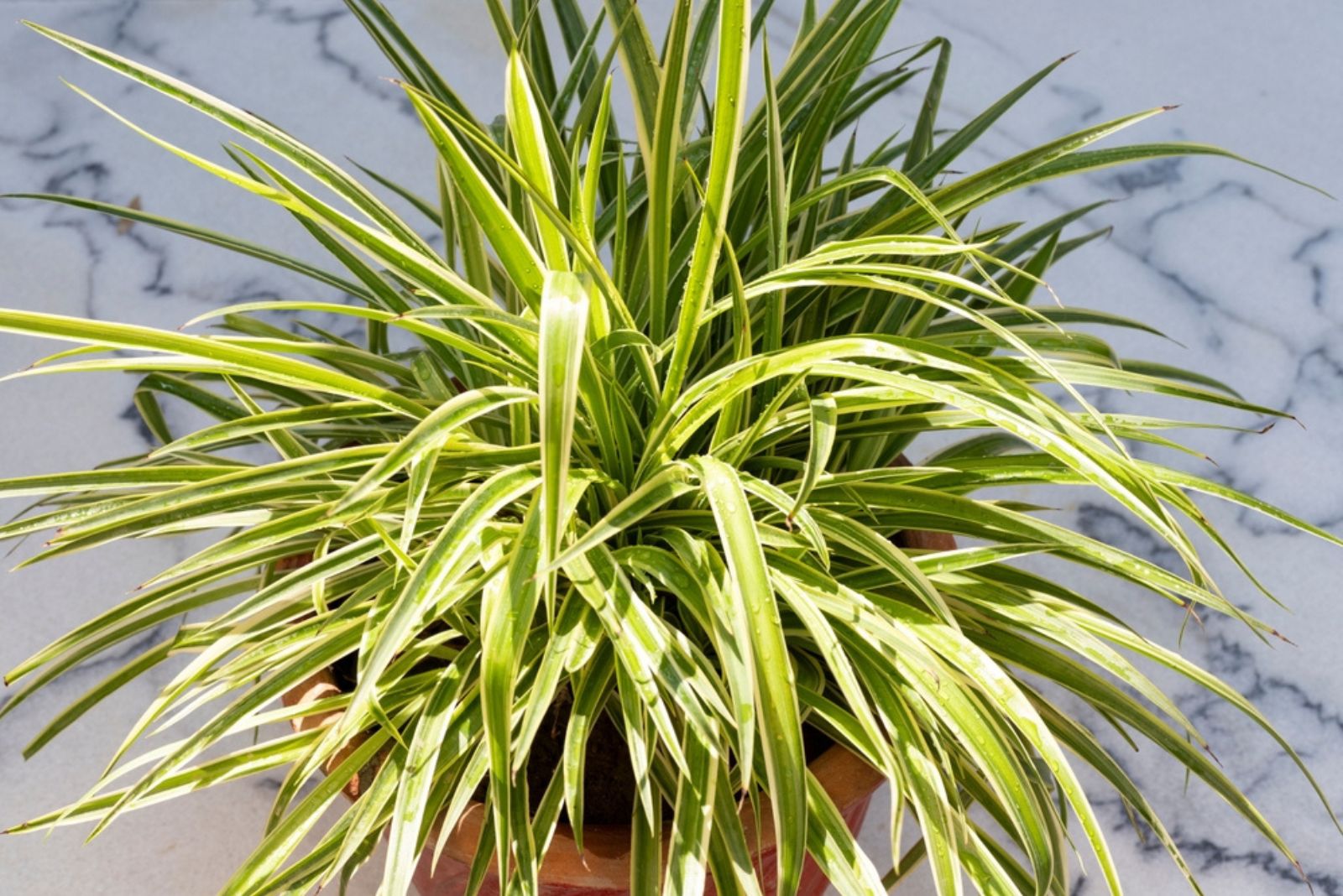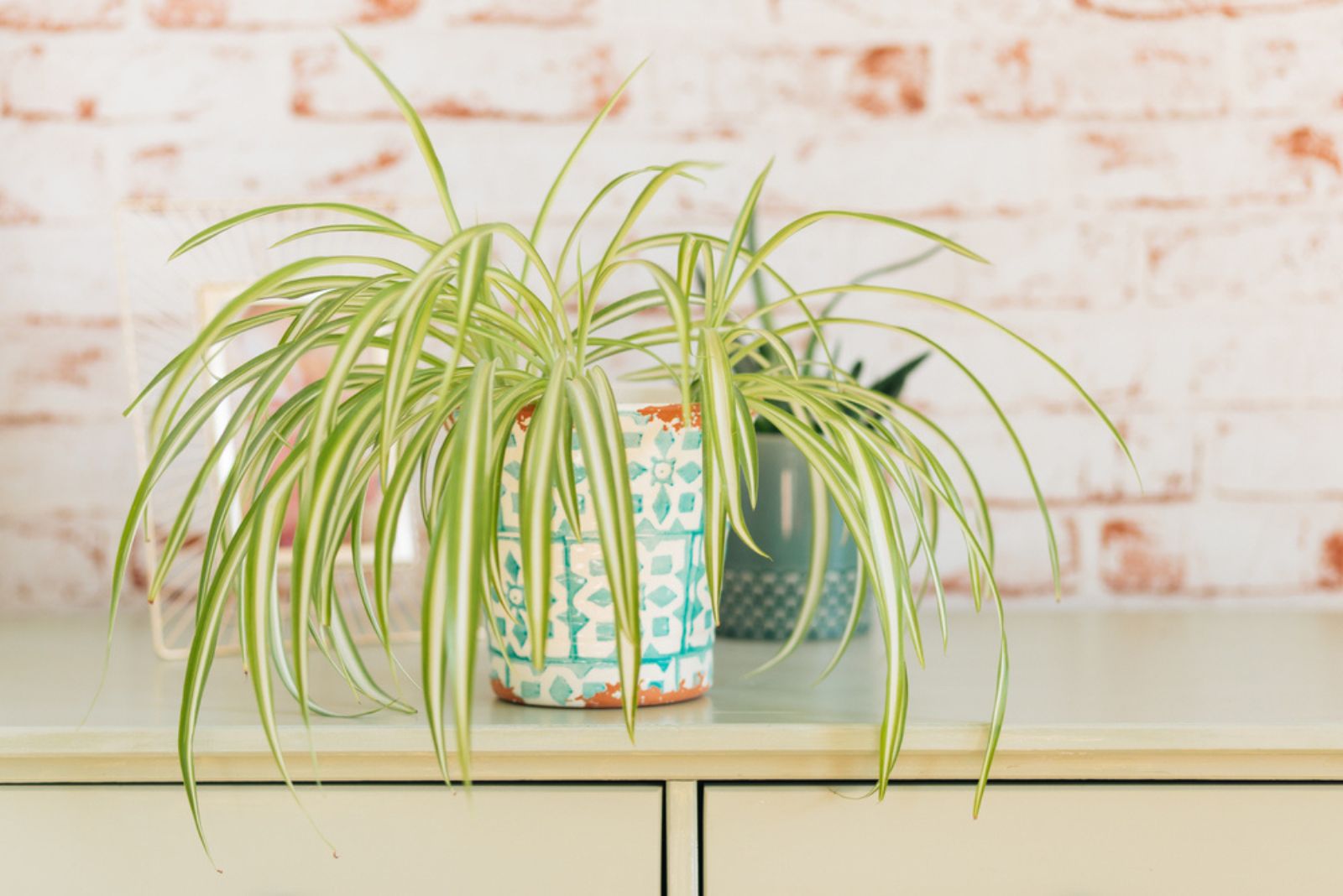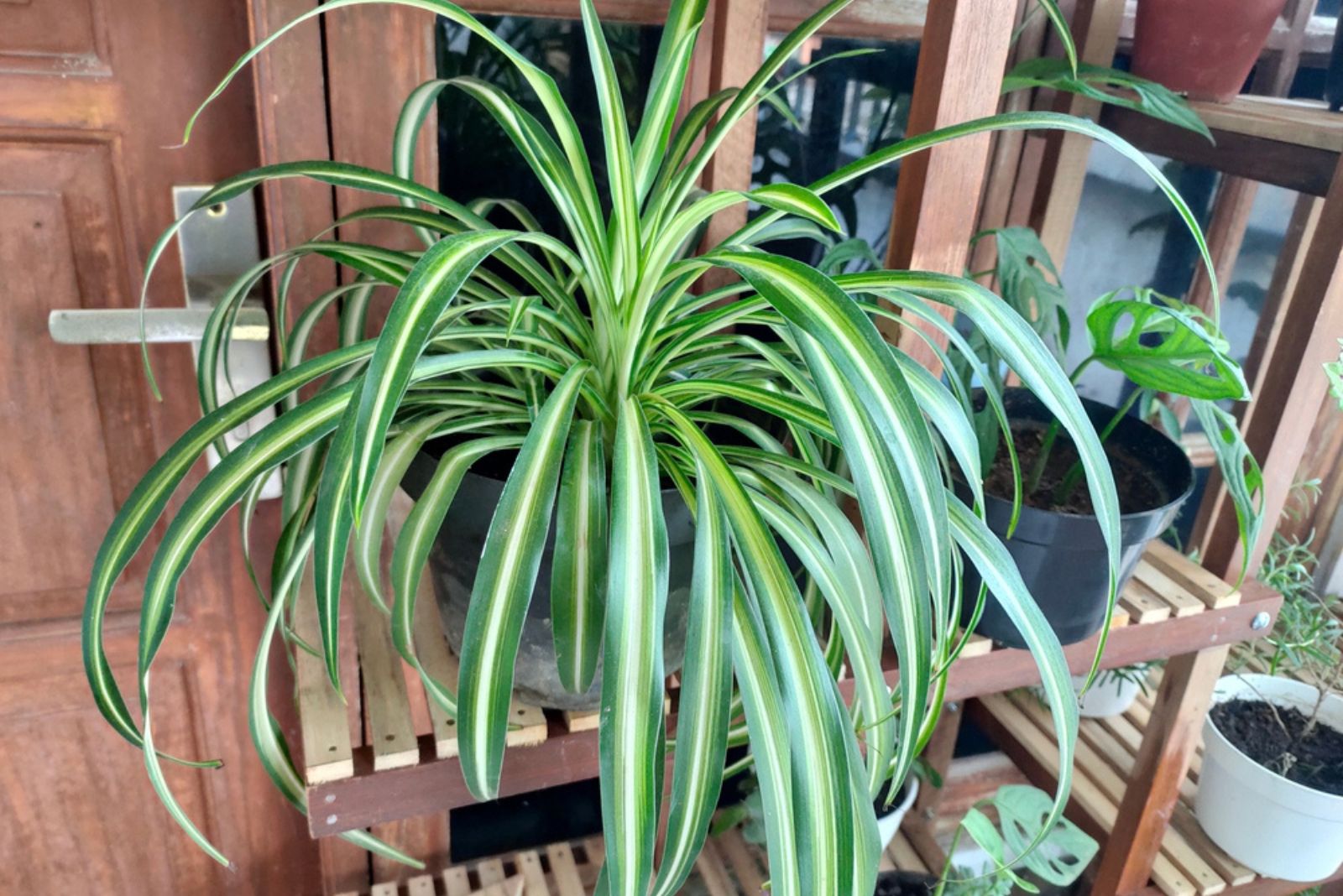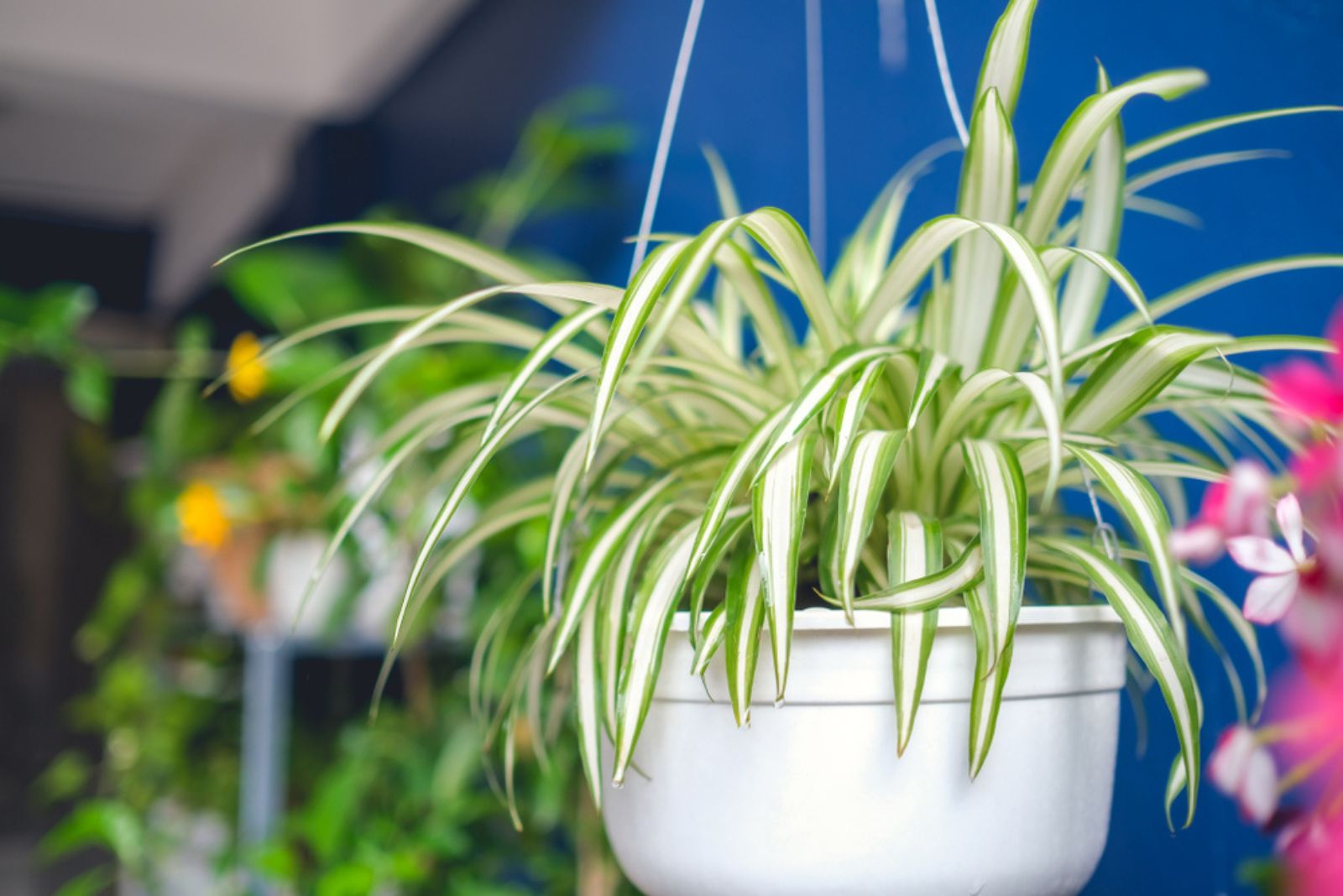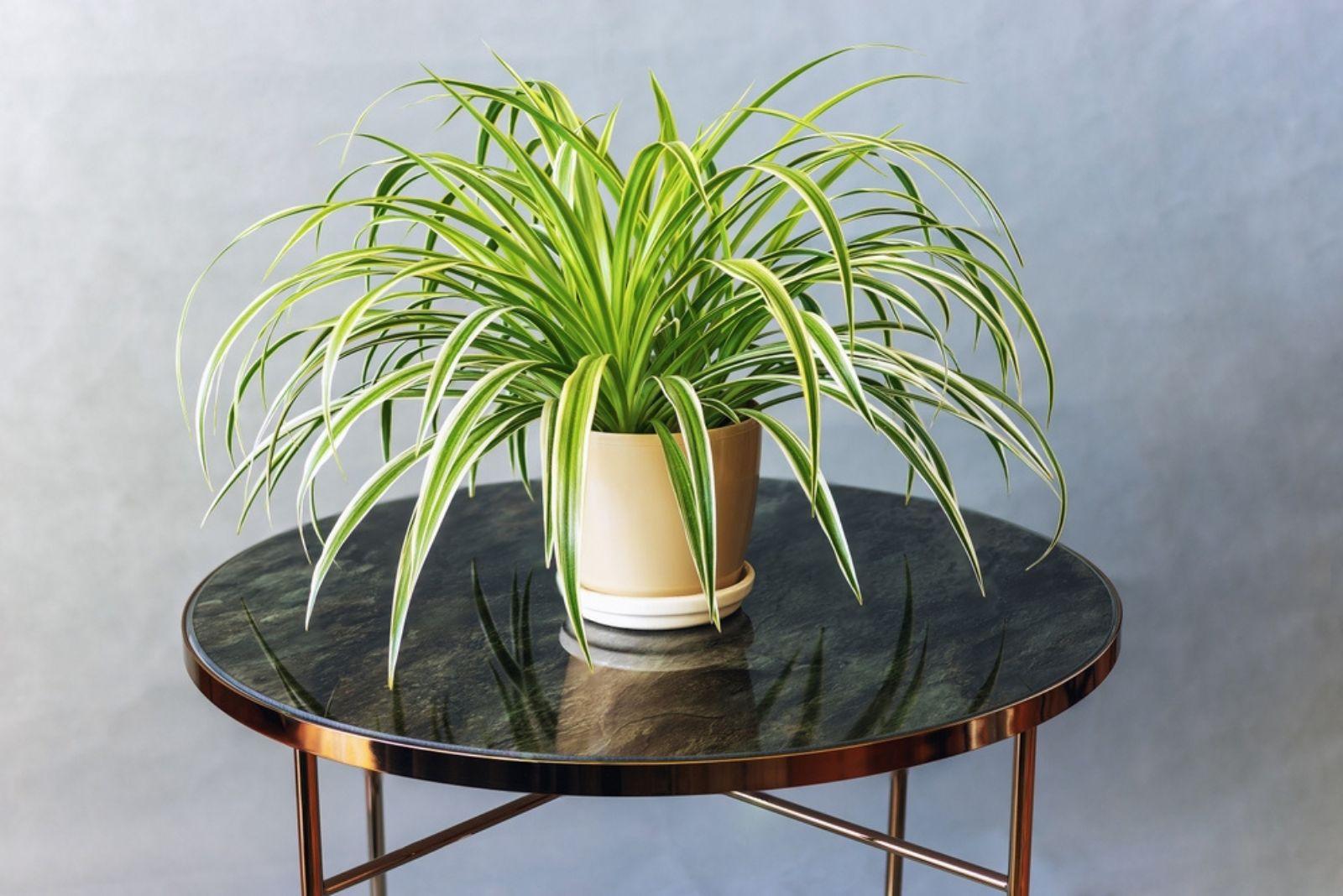Spider plants have a pretty uncommon nickname; luckily, they have nothing to do with scary arachnids!
Just to be clear; if you grow these plants, spiders won’t infest your household. All jokes aside, these plants adorn households worldwide and their appearance is definitely the main reason they are so famous.
Sometimes, these plants look kinda unsightly and they seem like they need a boost, so the question is: how to make spider plant bushier?
If you have had these thoughts, you are in the right place to find the answer.
Prune Your Spider Plant
I’m sure you already know that pruning has many advantages for the growth of your plants. It keeps diseases and pests at bay, enables your plant to maintain a desirable form and size, and encourages bushier growth while restoring the spider plant’s general vitality and health.
The great thing is that you don’t need to spend a fortune on specific equipment for pruning. A pair of garden shears, scissors, or pruners is actually all you need.
If you grow similar plants, such as snake plants, you can follow the same procedure.
Whatever you use for cutting, they need to be sharp unless you want to break your spider plant. It definitely won’t look bushier then!
You also need something to sterilize these tools; 70% isopropyl alcohol or standard bleach will do the job.
Another thing to bear in mind is that you should never prune during the colder months. You see, these plants grow actively during spring and summer, so make sure to trim them then.
Lightly prune your plant to remove any discolored or diseased foliage. Additionally, you can remove the leaf tips if they turn brown to promote new and healthier growth.
Guess what? These tips will also keep bugs away from your prized spider plant!
2. Give It More Light
Just like most other common houseplants, Chlorophytum comosum plants grow best in bright light. Since these plants are native to South Africa and grow on taller trees, they don’t receive direct sunlight due to the dense foliage of the tall plants that surround them.
This is what you should do in your home; not grow taller trees of course, but rather ensure that direct sun doesn’t reach the spider plant leaves!
Bright indirect sunlight will enhance the growth of your spider plant, so the stripes on the leaves will be more noticeable.
If spider plant leaves become pale, then check the light level. Low light is responsible for color loss, poor growth, and watering issues.
On the other hand, direct sunlight causes spider plant leaves to become scorched and lose their color.
So, if you want to make these plants bushier, give them enough bright indirect light!
A spot near a sunny window will give your spider plant all it needs (at least, when the light lever is concerned). If you can’t find such a spot, consider getting artificial lights!
3. Keep It Well-Hydrated
Well, your spider plant needs water, and best of all, if you get it right, your plant will be bushier! First, you need to know when exactly to water these houseplants.
Generally speaking, the spider plants aren’t heavy drinkers, but it all depends on other growing conditions.
A rule of thumb is to water your Spider plants when the top two inches of the topsoil have dried out. Low temperatures decrease the watering needs of spider plants, so you don’t need to water these houseplants frequently during the winter months.
High temperatures enhance water evaporation, so it’s not surprising that spider plant will need more water during the summer months.
The best type of water for plants is rainwater, but distilled water will also do a great job.
Well, not many gardeners realize that water type plays a significant role in plant growth because they’re susceptible to fluoride, chlorine, and other harmful compounds found in tap water.
When watering, aim for the soil only, as the leaves can rot if water gets on their surface.
Did you know that overwatering and underwatering are major causes of spider plants dying, so pay close attention to the watering schedule!
4. A Little Moisture Goes a Long Way!
Another way to get a bushy spider plant is by increasing humidity levels. Look, these plants adore high humidity, and the main reason for this is their natural habitat.
Low humidity won’t only make this plant less bushy, but may also seriously damage its health.
Investing in a humidifier is the best way to combat humidity issues. If you don’t want to spend money, or you don’t need to increase humidity much, there are some natural ways to do so.
If you are a beginner grower wondering if humidity trays really increase humidity, the answer is yes. However, this method is only useful if you need to increase humidity slightly.
But if the moisture level in your household is very low, pebble trays won’t be enough. Other methods you can use are grouping your houseplants or moving your spider plant to the kitchen or bathroom.
A great option is to put some plants that resemble spider plants next to the ‘real spider plant’ to enhance humidity.
Also, if your spider plant isn’t bushy, check if it’s near any air conditioners or heating sources. Houseplants don’t like temperature fluctuations or cold drafts!
5. Propagate Whenever Possible!
Didn’t see this coming, right? Well, you can make spider plants bushier by propagating them.
All you need is a pair of sterilized scissors, a nursery pot, and a soilless potting mix.
Here are the steps for rooting spiderettes, aka baby spider plants.
1. Inspect your spider plant and look for spiderettes that are about an inch long.
2. Remove the runner, otherwise known as the stolon, from the parent plant. Make an incision as close to the spiderette as possible.
3. Fill the nursery pot(s) with sphagnum moss and put the plantlet(s) into it.
4. Make sure the soil of the spiderettes is constantly moist.
5. When these lovely baby plants develop roots that are about 3 inches long, it’s time to transplant them. Take them out of the nursery pots, and plant them around the main plant.
There you go; the main plant with spiderettes around it will give you a bushy spider plant!
6. Give Your Plant A Fresh Start With Repotting!
Luckily, Chlorophytum plants have a fast growth rate, so potted plants from the genus require repotting more often than other common houseplants.
Once they become pot-bound, you need to plant them in a larger pot. If the spider plant care is adequate, repotting is typically required every two years.
This is actually beneficial if you’re aiming for a bushy spider plant. Repotting will make it fuller and will promote new growth.
If the root ball doesn’t have enough space to grow, the spider plant will focus its energy on producing baby plants instead of new leaves.
Here’s how to do it.
1. Take your spider plant out of its pot by tipping the pot to one side and letting the plant slide out.
2. Inspect your spider plant closely. All the roots should be completely healthy before being transferred to a larger pot.
Mushy roots are indicators of root rot disease, so you need to remove them and disinfect the root ball. If everything seems all right, proceed with repotting.
3. Fill the new pot halfway with fresh soil mix, and put your spider plant in the center.
4. Add more growing medium until the root ball is entirely covered.5. Irrigate your plant and let it drain well, as excess water in the soil encourages fungus.
7. Feeding Is A Key To A Healthy And Bushy Spider Plant
Never forget that fertilization is another essential part of spider plant care. Even though these plants do well on their own, feeding can aid growth and make these plants healthier and bushier.
Feeding during the growing season will promote root development and the development of new leaves.
Interestingly, spider ivy will sleep through the winter, so feeding it isn’t necessary.
I highly recommend using organic fertilizer for these houseplants. They don’t contain chemicals and will add nutrients gradually. This is the best way to avoid fertilizer burn, which can be fatal for spider plants.
If you decide to use chemical fertilizers, all-purpose liquid plant food will work fine.
One more thing; always dilute chemical plant food to half strength and only apply it twice a month during the growing season.
8. The Right Soil Makes All The Difference
Choosing the correct growing medium will help you avoid several problems with spider plants.
For instance, potting soil amended with perlite or pumice will prevent water accumulation, which can result in root rot. This is especially important for new plants.
If the growing medium is appropriate, spider plants will display new growth and have a bushier appearance.
Drainage holes in the bottom of the pots will also help you control moisture levels in the potting soil. All excess water will go out through holes, so the roots won’t be sitting in standing water.
These plants prefer pH levels between 6.0 and 6.5. I also recommend adding compost based on loam to enhance fertility and ensure more nutrients for your spider plant.
9. Adjust Temperature
The perfect temperature range for plants from the Chlorophytum genus is from 65 to 75 degrees Fahrenheit.
As far as the nighttime temperatures are concerned, they should be around 55 degrees Fahrenheit.
No spider plant, including the Bonnie Curly spider plant or Purple spider plant, can withstand temperatures below 50 degrees Fahrenheit. And temperatures over 80 degrees Fahrenheit can also harm these plants.
These plants thrive outdoors in USDA hardiness zones 9b through 11. As soon as temperatures drop, move your spider plant indoors!
But If Your Spider Plant Displays Any Signs Of Distress, Fix The Issue Before Doing Anything Else!
I know that you want your prized plant to become bushy ASAP but if there’s any kind of problem, you’ll need to deal with it.
And trust me, the possible causes for a sparse spider plant is long.
Always start by inspecting your plant closely!
What If Leaves Are Losing Their Original Color
If your spider plant isn’t bushy and it displays yellow or brown leaves, there are a couple of things to consider.
First, check the moisture levels in the potting soil. If the soil is mushy and smells bad, and the leaves are yellow, you might be dealing with overwatering.
If the soil isn’t mushy, you need to check the light levels. Too much or not enough light can also cause yellowing.
Spider plant leaves can turn brown if the potting soil lacks water. Letting the soil dry out between waterings is recommended, but you shouldn’t wait until it dries out completely. Remove the leaf tips with sterilized pruners and give your spider plant a good soak.
They Can Also Get Disformed
Your spider plant looks too sparse and the leaves are wilting or curling? Check the moisture content in the growing medium immediately.
Underwatering is the most frequent cause of curling or wilting. If the growing medium is dry and crumbles when you touch it, your spider plant is very thirsty.
Remember that root rot destroys the roots, so the other plant parts won’t be able to receive water. As a result, they dehydrate and display wilting and curling.
What If The Plant Stops Growing Entirely?
If the plant doesn’t display any new growth at all, you need to check a few things.
As mentioned, overwatering, underwatering, incorrect light levels, low or high temperatures, and low humidity can all be causes of poor spider plant growth.
Pests and diseases may also be possible causes for poor growth.
Aphids, mealybugs, and spider mites can damage your spider plant. If your spider plant is bushy and lush, but suddenly stops growing or you notice some changes, check for pests.
Spider plants can suffer from bacterial leaf blight, which causes lesions on the tips of the leaves. The most common causes of this disease are high humidity and high temperatures.
When To Expect Results?
Making your spider plant bushier is a goal that requires patience, proper care, and consistent effort.
Whether you’re following pruning tips, adjusting its environment, or propagating new offshoots, the timeline for seeing noticeable changes can vary depending on several factors.
Understanding when to expect results is crucial in managing your expectations and maintaining motivation.
The Type of Care You’re Providing Is Cruical
The steps you take to encourage a bushier spider plant will largely dictate how quickly you see results.
For instance, if you’re focusing on improving light exposure, humidity, and watering, you may notice some initial changes within 2 to 4 weeks. Plants generally respond to better conditions quickly, showing signs of new growth, increased leaf production, or more vibrant color.
But if you’re propagating your plant or making significant changes to its pot or soil, the process will take longer. Propagation requires the spider plant to produce new roots and establish itself before it becomes more full and bushy.
You might start seeing new pups (baby plants) after 4 to 6 weeks, but these won’t start contributing to a bushier appearance until they’ve developed properly, which could take a few months.
Your Spider Plant Won’t Grow At The Same Rate All Year Long
I already told you that spider plants are relatively fast growers compared to some other houseplants.
And under optimal conditions – bright, indirect light, proper watering, occasional feeding, and a comfortable temperature – you can expect your spider plant to grow at a steady rate.
Typically, spider plants produce new shoots or “pups” every 4 to 6 weeks during the growing season, which is spring and summer.
However, spider plants naturally go into a slower growth phase during fall and winter, so if you’re aiming for faster results, it’s best to focus on the warmer months when the plant is actively growing.
During this time, you might start to notice that the plant’s new growth is thicker and denser. If you’re adding nutrients and improving care, this growth can be more pronounced within 6 to 8 weeks.
And Remember, Patience Is The Key!
I’ve found that the key to success is maintaining steady, good care throughout the year. Look, the spider plant may not show dramatic changes immediately, but over time, with the right environment and patience, it will reward you with lush new growth.
In the end, the wait is worth it. Persistence pays off, and by following the right steps consistently, you’ll be able to enjoy a fuller, bushier spider plant that brings life to your space for years to come.
Spider plants are one of my favorite houseplants, and it’s definitely not because of their nickname. They are easy to maintain and look magnificent when they have a bushy appearance.
You’ve seen some tips and tricks for how to make spider plant bushier; these plants are native to tropical climates, so all you need to do is to mimic such conditions indoors.
Follow our advice, and I’m sure you’ll get a lush and bushy plant in no time!

